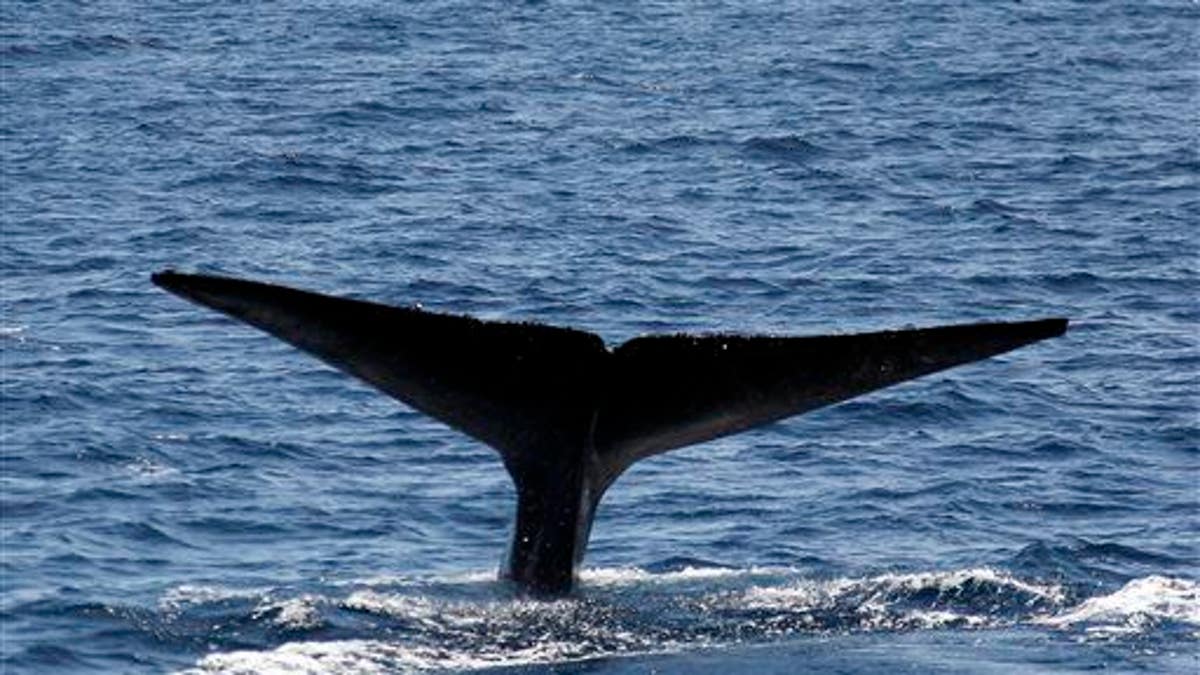
A blue whale dives and shows it's fluke in front of the Sea Breeze Cruises flagship the Triumphant during a whale-watching trip on the Pacific Ocean from Long Beach, Calif., on Sunday, July 20, 2014. (AP Photo/Nick Ut)
All this time, scientists thought a whale's pelvis was useless—but it turns out that it may actually help the marine mammal make its moves when it's time to get it on.
A study published in the journal Evolution finds that bigger actually is better when it comes to the pelvic bone, with a correlation between whales with larger testes and the size of their pelvic bones to help control the larger member, the Washington Post reports.
The bone is attached to the male whale's penis muscles and likely helps the animal exert a "crazy amount of control" over its reproductive organ, scientists say.
It wasn't easy to cull this info: "Whale sex is a particularly enigmatic thing and remains basically unobserved," the Post notes. But scientists collected pelvic specimens from 130 cetaceans (an order that also includes dolphins and porpoises) and scanned their finds with lasers, Smithsonian reports.
Creatures with larger testes—which have been shown to mate more, a study in Ecology Letters reports—seemed to have larger pelvic bones. Researchers also believe that whales with the most "unique" pelvis shapes are able "to move their reproductive organs in novel ways." "It's like someone operating a trick kite, where you pull two strings, and pulling left and right makes it go in a loop-de-loop," one scientist explains.
"That's basically how a whale's penis is working." (Read about Richard Nixon's predilection for talking about panda sex.)
More From Newser
